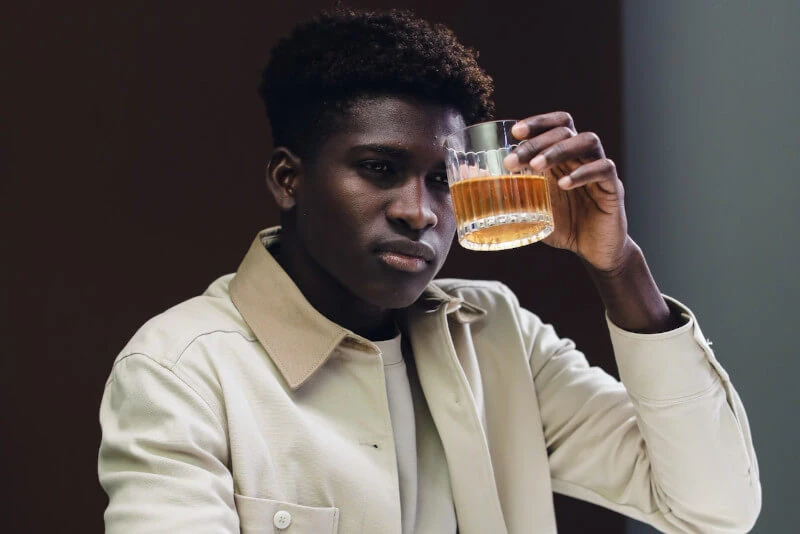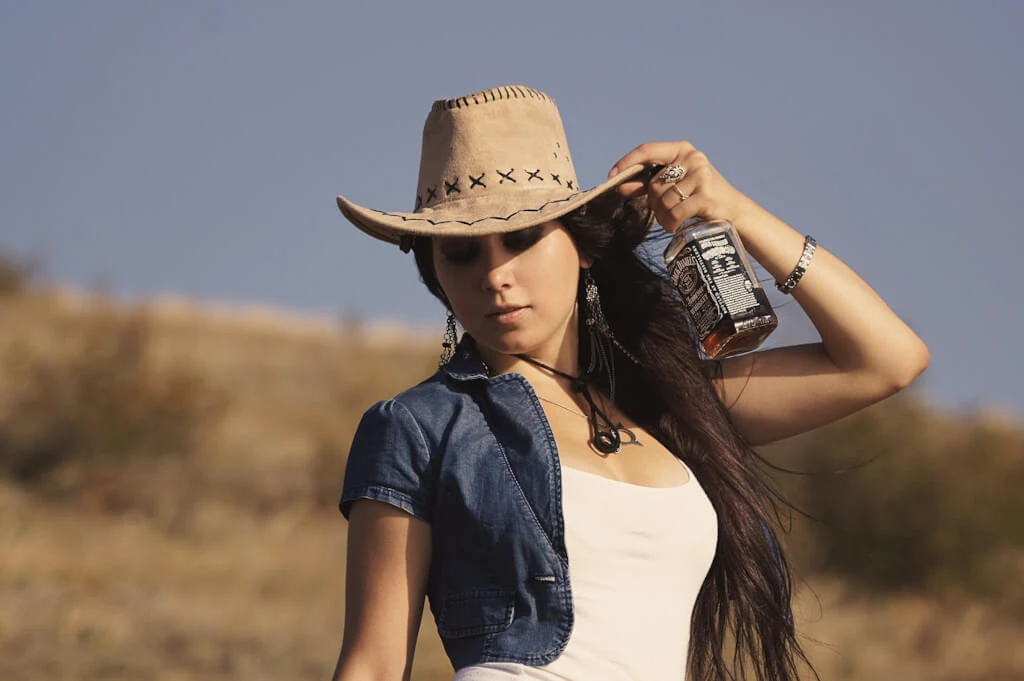Imagine a carefully made bottle of whisky that has been aged for decades, only to have it tragically shot back at it in a flash. Don’t give in to your inner cowboy and take a shot of whisky like water. The famous blender for companies like Whyte & Mackay, Dalmore, and Jura, Richard Paterson, has a stern message for you: take it easy and have some respect.
Paterson frequently discusses his exasperation at whisky events with the general public’s lack of appreciation for the nuances of a high-quality matured spirit. He recalled a time in New York when a whisky expert rushed over to a bottle of Dalmore 25 and swiftly threw it back. Paterson was taken aback by the man’s behavior and questioned him, prompting a playful slap to the face. The message was unmistakable: venerate the work of the hand.
You might assume this is only about following protocol, but the implications go much deeper. Paterson says the secret to enjoying whisky is to let it sit on your tongue for as many seconds as its age in years.
Still, Many People Aren’t Included
Rare and aged whiskies are typically drunk like water on social occasions. This scene brings to mind cowboy movies, where the tough guys casually down drinks. But whisky is one of the few beverages where using this technique might ruin the pleasure. You’re missing out on the vanilla, honey, spice, and numerous other undertones that make alcoholic beverages so enjoyable.
The cinematic scenes of cowboys sauntering into saloons, throwing back shots of whisky before riding into the sunset, have deeply influenced our perception of whisky consumption. This imagery, deeply rooted in Wild West films, arguably shifted how we view whisky – from an art to be revered, to a rugged beverage consumed hastily.
Historically, the Wild West was characterized by uncertainty, danger, and a constant need for alertness. Saloons became places of refuge and relaxation, albeit briefly. Whisky was consumed quickly for a couple of reasons. In a volatile environment, lingering made one vulnerable. Swift consumption was a survival tactic, ensuring cowboys were alert and ready for potential skirmishes. Quick consumption was economical. A cowboy might only have a few coins to spare, so they’d buy the strongest drink, seeking a rapid effect.
In contrast, the European tradition of whisky consumption was more deliberate. In regions like Scotland and Ireland, whisky was savored among friends, with each sip sparking debates about the nuances of flavors, the craft of distillation, and the aging process. It was as much a part of their social fabric as the stories they shared.
As Hollywood began to romanticize the Wild West in films, these quick shots became emblematic of the cowboy lifestyle: rugged, masculine, and unrefined. This portrayal inadvertently downplayed the art and finesse of whisky production, focusing more on its potency than its depth.
An apt analogy might be that of a master chef’s dish being consumed like fast food. Imagine spending hours preparing a gourmet meal, only for someone to eat it in mere seconds without appreciating its nuances. Similarly, each whisky tells its own story – from the grains chosen to the casks used for aging. To gulp it down is to miss its narrative.
So, while cinematic cowboys offer a tantalizing image of rebellion and freedom, their drinking habits should be separated from the true art of whisky appreciation. Just as we distinguish between art and entertainment, so should we discern between the depth of whisky’s heritage and a mere cultural trope.
Whisky is Much More Than Simply How It Tastes

It’s the complexity, the richness, the fullness, and the persistence of the aftertaste that reveal the tale. Whisky is best enjoyed by placing it in the middle of the tongue, letting it roll to the sides, and then bringing it back up for another taste. After that, the whisky is smooth and the heat awakens every taste bud. When asked if they can tell the difference between a Highland and an Islay or if they can detect the distinctive sherry nuances, Paterson always encourages whisky lovers to be interested.
Consider whether you’re buying an expensive whisky for the experience or the status symbol. Even if people notice your bottle, the real pleasure is in enjoying every sip. Now, let me break it down for you in bite-size pieces, in case you didn’t catch my drift, here’s how not to approach whisky, especially when it’s a rare or expensive variant:
- Avoid Swift Gulping: As tempting as it might be after a long day, never down your whisky in one go. Why? The nuances of flavors get overlooked, and you risk missing out on the intricate dance of ingredients that took years to perfect.
- Bypassing the Nose: Engage all your senses. Before you take a sip, inhale the aroma. Each scent note is a clue to the whisky’s character. A quick sniff, like a dog catching a whiff of a distant treat, doesn’t do justice to the bouquet of aromas.
- Immediate Consumption: Never drink your whisky as soon as it’s poured. Allow it to breathe a moment. Why? Spirits, like wine, change character when exposed to air, often enhancing their profiles.
- Sipping Without Savoring: Remember the 22-second rule from Paterson’s story? Apply it. Hold the liquid in your mouth, letting it touch every part of your palate. Instant sipping dismisses the layered story each drop narrates.
- Dilution Overkill: If you’re adding water, do so drop by drop. Over-dilution can destroy the balance the makers strived for. It’s like pouring a liter of milk into a carefully brewed espresso; the essence gets lost.
- Ignoring the Glassware: Using inappropriate glasses, like shot glasses or wide-brimmed ones, can alter your experience. Why? Certain glasses are designed to concentrate the aroma, letting you deeply engage with the whisky.
- Chasing with Another Drink: Whisky isn’t a chaser. Using it as such underestimates its value. It’s like reading the last page of a novel and claiming you understand the story; the essence is lost.
- Constant Ice: While some prefer their whisky cold, continuous ice can numb your palate, muting the flavors. Imagine winter gloves while trying to feel silk; the delicacy is lost.
- Not Engaging with its Origin: Not acquainting yourself with where the whisky comes from is a missed opportunity. Why? Knowing the origin can provide context, making your experience richer. It’s akin to watching a movie without any background – you miss the essence.
- Mock Tasting Sessions: Avoid turning your tasting sessions into speed drinking competitions. The focus should be on appreciation, not consumption. It’s similar to rushing through an art gallery; you see everything but observe nothing.
Consider a work of art in the same line as the advice of Richard Paterson. You wouldn’t just quickly scan it and go on; you’d linger over it, taking in the details. Whisky, with its complex flavors and long history, is worthy of the same careful consideration. If you want to fully enjoy the craftsmanship of whisky, follow this simple rule: give each taste a second for every year of its age, and maybe a bit more. After all, we should take our time appreciating the fruits of our labor.

